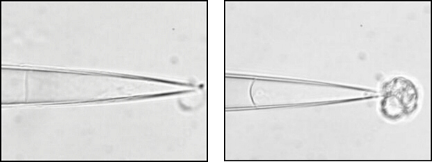Our laboratory studies mechanosensitive channels, primarily from microbes (although we are now extending our research to mammalian mechanosensors). We are interested in the molecular mechanisms of gating of these channels, the role they play in physiology, and the possibility of utilizing these channels as sensors in small nano-sized devices.
Ours is a multidisciplinary laboratory with people from around the world that have diverse but complementary scientific interests that range from microbial physiology to neuroscience. The approaches used within the laboratory include molecular biology, basic biochemistry, microbial physiology, microbial genetics, electrophysiology and other biophysical techniques. Our laboratory has three major lines of research:
Molecular mechanisms of gating a mechanosensitive channel
Little is known about eukaryotic mechanosensitive channels (although they are used in the senses of touch, hearing, balance, cardiovascular regulation…). Hence, microbial channels are now serving as a paradigm for how channels, or proteins in general, may sense and respond to tension in the lipid membrane. A microbial system has many advantages for these studies. First, microbial genetics can be utilized to rapidly associate structural features with functional properties. Second, large amounts of material can easily be obtained for study; this property has allowed us to purify the protein and clone the corresponding gene, and another group to crystallize the MscL channel. Third, many of the channels are resilient, thus allowing for their purification and reconstitution into artificial systems. Finally, many assays can be rapidly performed to determine the functional properties of mutants and homologues. These include whole-cell physiological and electrophysiological approaches.

The role in microbial physiology and the possibility of using bacterial mechanosensitive channels as drug targets
We have equipment that allows us to visualize the patch in a microelectrode. This allows us to calculate tension in the membrane. Since the channels gate to tension in the membrane, not pressure across it, this is critical for certain experiments.
Mechanosensitive channels reside in the cytoplasmic membrane of essentially all microbes where they can play the role of an “emergency release valve”, allowing the organism to adjust to acute decreases in osmotic environments. By understanding the physiology, we get a better idea of how channels may serve as pharmacological targets. For example, our data demonstrate that if the MscL channel gates at inappropriate times, cell growth rate decreases and/or viability is lost; hence, if a specific agonist could be developed, it could have uses as an anti-microbial agent.

Nanotechnology
An understanding of the engineering principles of simple biological sensors may have implications in the design of molecular-scale mechanosensors for nano-machines or drug-delivery devices. More immediately, MscL itself has many properties that make it a prime candidate for such use. These properties include: a large conformational change and huge pore size upon actuation, the availability of many mutants with altered properties, and the ability to isolate or even synthesize large amounts of functional protein, to change size and properties of the pore, to change modality of the sensor to light or pH, and to reconstitute functional protein into artificial systems. We are currently investigating the possibility that this channel could be used as a nanosensor in a simple nano-scaled device
